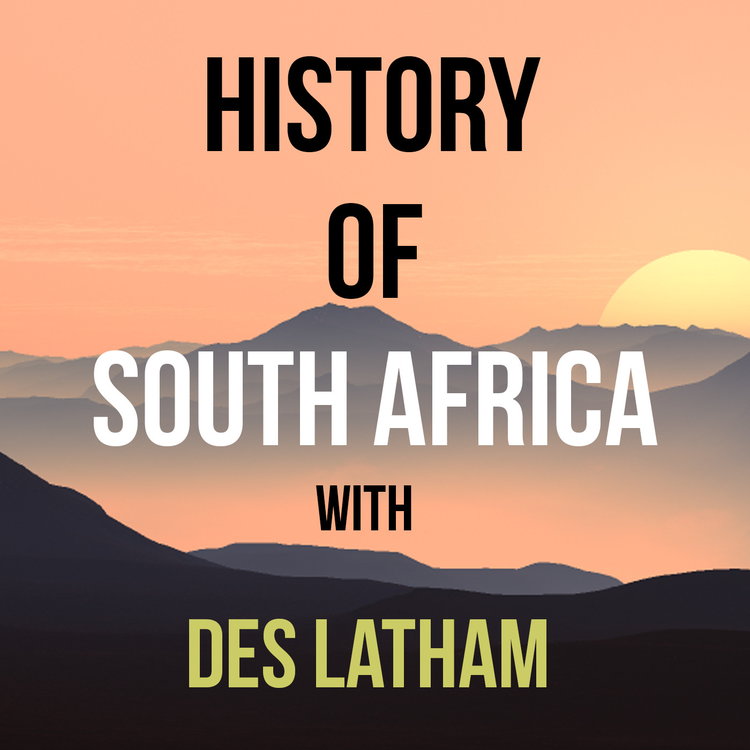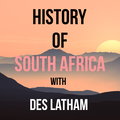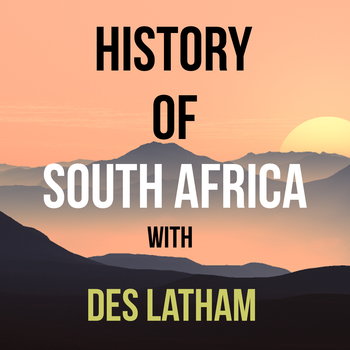
Episode 241 - Yankee Babies, Monstrous Cobwebs, the Devil’s Cauldron and Rhodes’ Steam Engine
Loading player...
Episode 241 and we’re back with the diamond miners and their Kaias and Cocopans. More about this in a minute.
A big thank you to Donald Paterson who’s great-great-great grandfather founded Standard Bank, he’s sent a couple of pictures I’m going to use in my next newsletter. And to Rob Bernstein who’s producing a photo-book and who’s asked me to write an epilogue, thanks for the coffee chat and the opportunity.
Last we heard about plans for South African Confederation, this episode ties up with the momentum building towards the invasion of Zululand by the British, and almost simultaneously, the first Anglo-Boer War.
We’ve entered the mid-1870s where all manner of momentums are also building up globally as the European powers jostled for African land in order to feed their industrial centres, and their geopolitical ambitions. The panic on the Vienna Stock exchange in May 1873 caused shares to decline worldwide and ushered in the 1873-1879 Great Depression.
The Suez Canal was also close to bankcruptcy because there weren’t enough steam ships in the world and the canal was better adapted to steam. The Khedive of Egypt was forced to sell his shares in the Suez Canal Company to the British Government with help from bankers and the Rothschild family. In Britain the downturn was going to last until much later - the late 1890s, and diamond prices were also falling. Despite this, South Africa was in a bit of a boom period.
In the diamond fields, the diggers were facing a problem and it was about geology. They had been digging in what they called yellow ground which was kimberlite rock. Over millions of years, the kimberlite in the top part of the volcanic pipe was exposed to the surface and weathered by the elements, including water and air. This process oxidized the iron-rich minerals in the rock, giving it a soft, friable, yellowish-brown color. Because it was so soft, it was easy for the early diggers to excavate with simple picks and shovels and to sieve for diamonds. But as they dug deeper by 1873 they passed through the weathered yellow ground and hit the un-oxidized, fresh kimberlite rock below. This rock, which they called "blue ground" due to its hard, bluish-gray color, was much more compact and difficult to mine.
Its hardness led many early prospectors to abandon their claims, mistakenly believing they had reached the end of the diamond-bearing ground. The discovery that the blue ground contained even richer deposits of diamonds was a pivotal moment that led to the development of the large-scale industrial mining operations at Kimberley. And Cecil John Rhodes returned from his failed attempt at obtaining a law degree in England to rejoin his brother on the diamond fields to take advantage of all these changes.
Jerome Babe wrote in his journal how he rose at the break of day, then dug until 9am. Breakfast was taken until 10am, when the diggers reconvened. Most diggings had two white men and five black men who could get through fifteen cart loads a day. The black workers would wash enough gravel in four hours for the mainly white diggers to sort through in ten hours. At 1pm they all knocked off for lunch until two pm, then washing would end at four pm.
That wasn’t the end of the day. The washers, the black labourers, would head back to the mining area to gather material for the next day’s washes and many miners continued working when there was moon, carrying the gravel to the river for the next day’s washing.
The diggers committees which had managed these mines was now an unsustainable way to administrate claims. Claim-jumping which took place when a mine was unworked for more than three days had increased instability and litigation was accelerating. It looked chaotic because the rights to small-claim ownership was being circumented by monopolies using fronts, straw men as they were known. Another very old South African tradition. Griqualand West Lieutenant Governor Richard Southey wanted state regulation.
A big thank you to Donald Paterson who’s great-great-great grandfather founded Standard Bank, he’s sent a couple of pictures I’m going to use in my next newsletter. And to Rob Bernstein who’s producing a photo-book and who’s asked me to write an epilogue, thanks for the coffee chat and the opportunity.
Last we heard about plans for South African Confederation, this episode ties up with the momentum building towards the invasion of Zululand by the British, and almost simultaneously, the first Anglo-Boer War.
We’ve entered the mid-1870s where all manner of momentums are also building up globally as the European powers jostled for African land in order to feed their industrial centres, and their geopolitical ambitions. The panic on the Vienna Stock exchange in May 1873 caused shares to decline worldwide and ushered in the 1873-1879 Great Depression.
The Suez Canal was also close to bankcruptcy because there weren’t enough steam ships in the world and the canal was better adapted to steam. The Khedive of Egypt was forced to sell his shares in the Suez Canal Company to the British Government with help from bankers and the Rothschild family. In Britain the downturn was going to last until much later - the late 1890s, and diamond prices were also falling. Despite this, South Africa was in a bit of a boom period.
In the diamond fields, the diggers were facing a problem and it was about geology. They had been digging in what they called yellow ground which was kimberlite rock. Over millions of years, the kimberlite in the top part of the volcanic pipe was exposed to the surface and weathered by the elements, including water and air. This process oxidized the iron-rich minerals in the rock, giving it a soft, friable, yellowish-brown color. Because it was so soft, it was easy for the early diggers to excavate with simple picks and shovels and to sieve for diamonds. But as they dug deeper by 1873 they passed through the weathered yellow ground and hit the un-oxidized, fresh kimberlite rock below. This rock, which they called "blue ground" due to its hard, bluish-gray color, was much more compact and difficult to mine.
Its hardness led many early prospectors to abandon their claims, mistakenly believing they had reached the end of the diamond-bearing ground. The discovery that the blue ground contained even richer deposits of diamonds was a pivotal moment that led to the development of the large-scale industrial mining operations at Kimberley. And Cecil John Rhodes returned from his failed attempt at obtaining a law degree in England to rejoin his brother on the diamond fields to take advantage of all these changes.
Jerome Babe wrote in his journal how he rose at the break of day, then dug until 9am. Breakfast was taken until 10am, when the diggers reconvened. Most diggings had two white men and five black men who could get through fifteen cart loads a day. The black workers would wash enough gravel in four hours for the mainly white diggers to sort through in ten hours. At 1pm they all knocked off for lunch until two pm, then washing would end at four pm.
That wasn’t the end of the day. The washers, the black labourers, would head back to the mining area to gather material for the next day’s washes and many miners continued working when there was moon, carrying the gravel to the river for the next day’s washing.
The diggers committees which had managed these mines was now an unsustainable way to administrate claims. Claim-jumping which took place when a mine was unworked for more than three days had increased instability and litigation was accelerating. It looked chaotic because the rights to small-claim ownership was being circumented by monopolies using fronts, straw men as they were known. Another very old South African tradition. Griqualand West Lieutenant Governor Richard Southey wanted state regulation.

